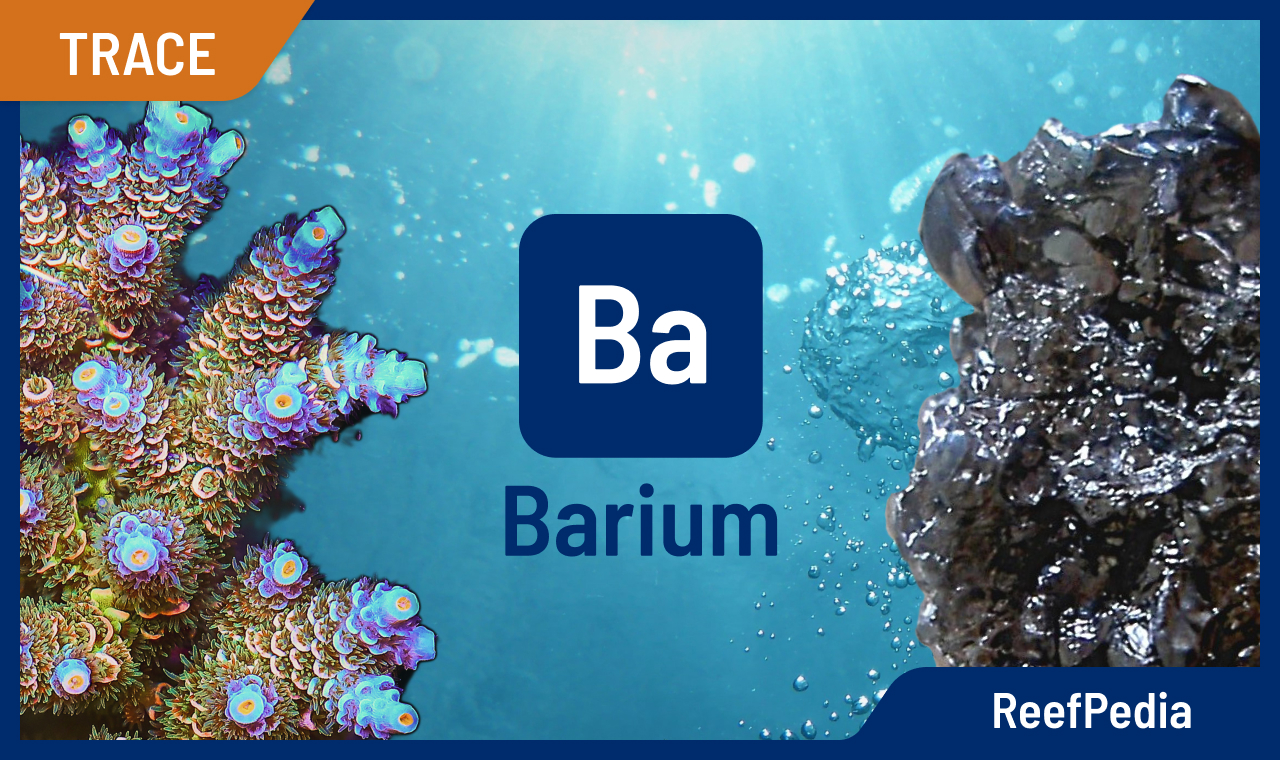What is BARIUM (Ba)?
Barium (Ba, Latin: barium) is a chemical element from the second group of the periodic table of elements, the so-called beryllium*. The same group of elements includes: calcium (Ca), magnesium (Mg), strontium (Sr), beryllium (Be) and radium (Ra). Although these elements belong to the same group, they differ significantly, among other things, in their natural distribution. Barium, as a free metal, is very reactive; in contact with air, it oxidises to barium oxide (BaO) and barium peroxide (BaO2). Barium occurs mainly in the form of minerals such as barite (BaSO4) and vitreous (BaCO3). In chemical compounds, it occurs mainly on the +II oxidation degree.
Importance of barium in seawater
Barium is included in the group of trace elements found in seawater. It is relatively scarce and is often underestimated by marine aquarists. Barium plays an important role in the growth of corals and helps to control calcification in their skeletons. It is important that barium is adjusted in the correct proportions to calcium (Ca) and strontium (Sr), which are key building blocks of the coral skeleton.
Risks associated with a deficiency or excess of barium in seawater
The effects of barium deficiency on marine animals are unknown; however, it is needed for normal animal development.
High levels of barium, on the other hand, can cause loss of colour and greying of corals. This may be particularly evident in SPS corals. It’s also important to ensure that iodine levels are adequate in the reef tank, as too low a concentration of this element compounds the negative effect of too high barium levels.
How to protect the aquarium?
Check the barium regularly and keep it at the right level. We recommend that you keep barium at a level of 5 – 20 μg/L, with the optimum value we recommend being 10 μg/L. Keeping barium in seawater at its detection level ensures healthy animals and beautiful colouration.
The most accurate and reliable method for the determination of barium is ICP-OES analysis. The technique of atomic emission spectrometry with induced plasma excitation – ICP-OES is the most accurate analytical method for the analysis of the elemental composition of seawater.
Recommendations
To ensure that the barium level in your aquarium is adequate, you should test it regularly and ensure that it is at the correct level.
When barium levels are above 20 μg/L, we are talking about an overdose. The most common sources of exceeding the recommended barium level are:
- contaminated salt,
- contaminated supplements,
- frozen and dry foods,
- garnishes,
- excessive doses of dosed liquids,
- filter media such as activated carbon.
Find and eliminate the cause of the problem and lower the value of this parameter in the water. Perform up to 6 water changes. It is recommended to change about 15% of the aquarium water volume during each water change until the recommended value of this parameter is reached. The water prepared for the change must have the correct target salinity level. Use salt with the correct parameters and composition suitable for the ICP test.
In the event that the barium level is below 5 µg/l, we recommend using products containing this element in order to equalise its level. In order to ensure constant barium levels in marine aquaria, we recommend systematic supplementation of this element depending on the coral population in your aquarium.
*The name beryllium is derived from the name of the first element placed at the top of the second column of the periodic table (Be-beryl).
About author

Magdalena Metzler
Privately, I am a mother and a lover of nature and sport. My main interest is quantum chemistry, which hides a whole lot of unsolved mysteries and connections, which is extremely exciting from a scientific point of view.
In my scientific career, I have conducted international projects focused on innovative solutions for many branches of business, e.g. automotive, construction, and now, of course, marine aquaristics.
Working at Reef Factory gave me a passion for marine aquaristics, which I can develop every day, building a chemistry department and creating products that will help aquarists take care of tanks and ensure the highest safety of animals.
One of the most exciting memories of working at Reef Factory is the commissioning of the ICP-OES spectrometer, which analyzes the elemental composition of seawater. The method of analysis in ICP is based on an analytical technique, which is a combination of my passion for quantum chemistry and marine aquaristics.
I hope you find my articles on ReefPedia interesting and helpful! Happy reading :))
Magda

